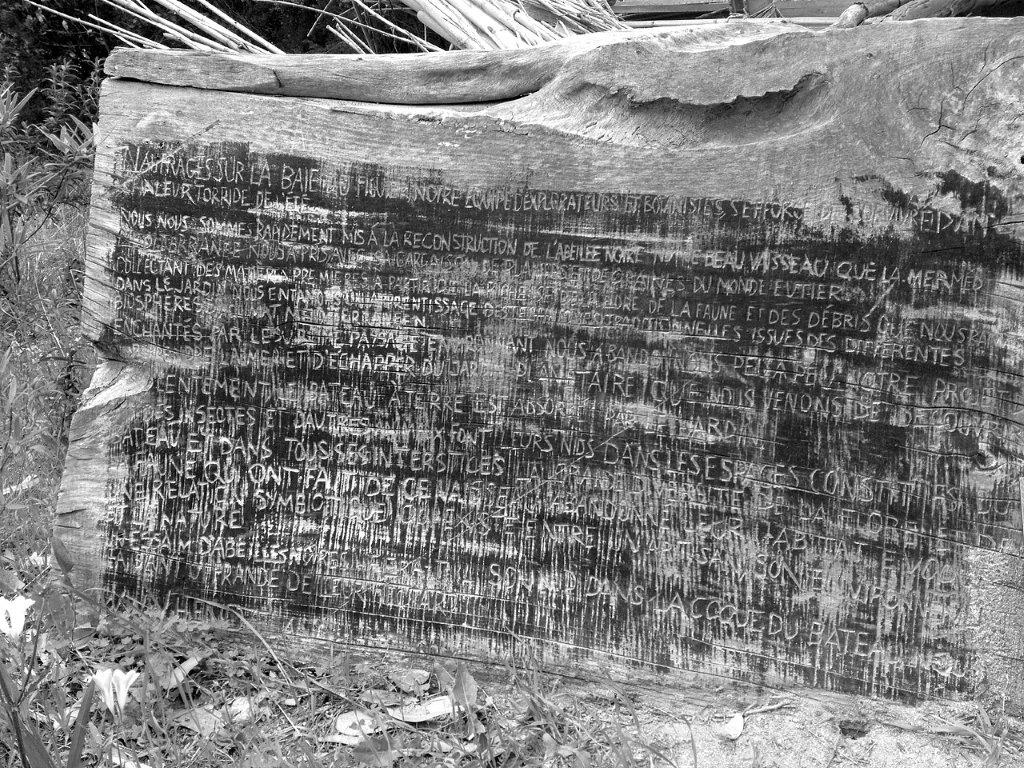Theory of Continents
by Jonathan Skinner
The wreck of a reed boat sits amidst the dry scrubland, under its sun
bleached palm frond shelter. By enlarging the picture you can make
out a message carved from pitch on a hewn slab of driftwood:
“Stranded on Fig Bay, our team of botanists and explorers struggles
to survive in the torrid summer heat. We immediately set to work
ebuilding the Black Bee, our beloved craft the sea took from us,
with its cargo of plants and seeds from around the world. Collecting
primary materials from the wealth of f lora and fauna, and out of the
debris that we gather in the garden, we embark on an apprenticeship
to local techniques, fruit of the diverse biospheres of a coastal desert
climate. Enchanted by the sublimity of the surrounding landscape,
little by little we abandon our project of taking to the seas again
of escaping this garden we have only just discovered. Slowly, the
garden absorbs the grounded ship. Insects and other animals make
their nests in the const- [illegible] of the boat and in all its interstices
the great . . . [illegible] wildlife who have made of this ship [illegible] . . .
a symbiotic relationship . . . and nature . . . a swarm of bees.”

Quoted text (trans. J. Skinner) co-authored by Jan Hendzel, Oscar Hunt, Etienne Haller & Elinor Scarth for their installation, The Black Bee of Porquerolles, in Gilles Clément’s “planetary garden,” Domaine du Rayol.

